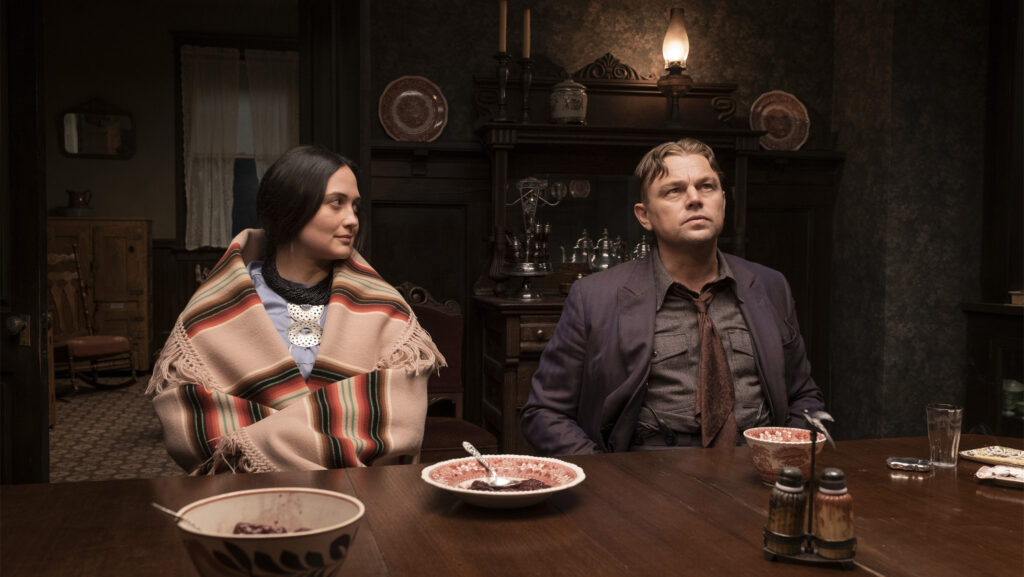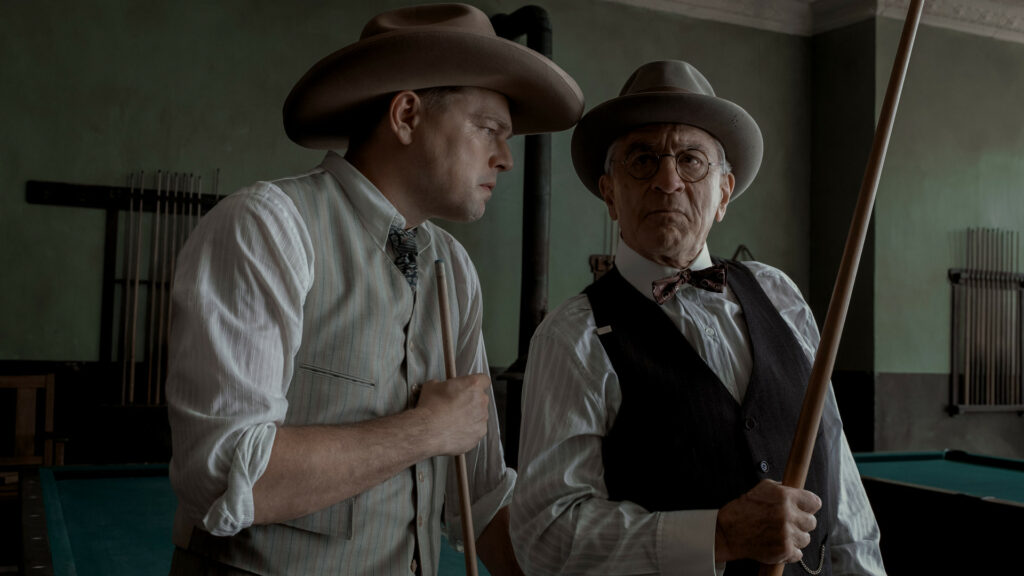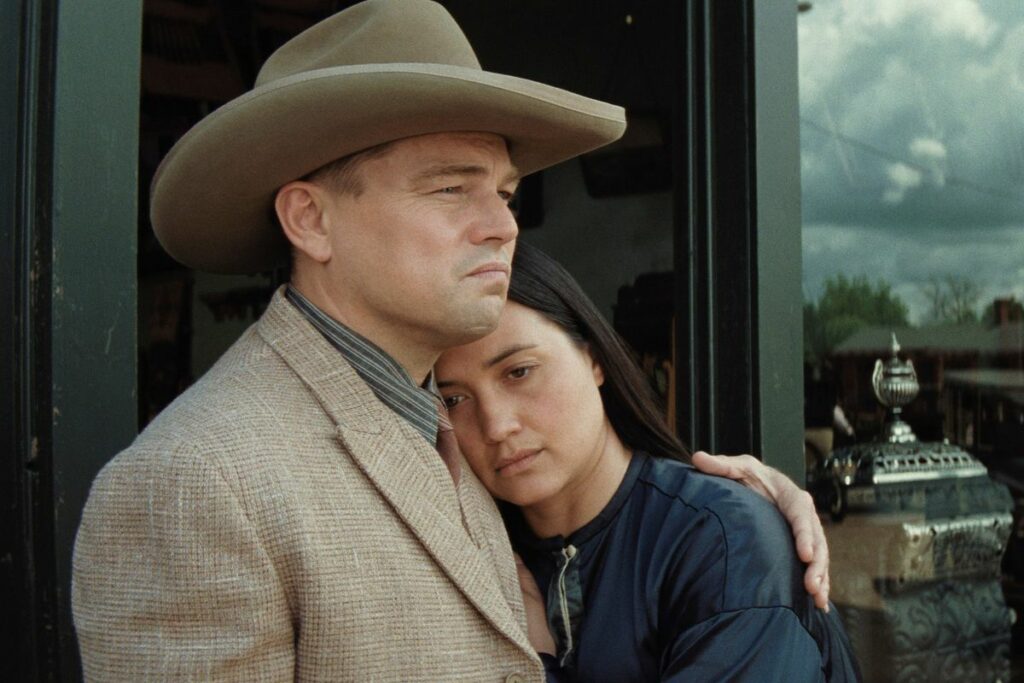Based on David Grann’s best-selling true crime novel of the same name, Killers of the Flower Moon, delivers a gripping account of one of the darkest chapters in American history. Set in 1920s Oklahoma, the film chronicles the true events that became known as the ‘Reign of Terror’, a series of brutal murders targeting the oil-wealthy Native American Osage Nation. With a stellar cast, brilliant writing, and meticulous production, director Martin Scorsese‘s latest film delves deep into the intricate layers of power and exploitation that underpin the ostensibly peaceful community.
On the surface, the town of Fairfax appears like any other in the U.S. during this period, but it soon becomes clear that due to sheer luck, the power dynamics are reversed. Unlike elsewhere in the country, here the financial and material wealth, lies with the Osage nation rather than their white neighbours, due to the discovery of oil reserves on Osage land.

Not content with this status quo and seeing an opportunity to exploit the situation, William Hale, the self-proclaimed ‘King’ of Fairfax becomes the mastermind behind the string of infamous killings in a plot to shift land, resources and money away from the Osage people through a campaign of convenient marriage and murder. Robert De Niro‘s portrayal of the insidiously evil cattle rancher is utterly mesmerising.
As a modern viewer, amongst the picture-perfect village fetes and carnival like celebrations it’s easy to forget the culture of systemic racism and capitalist greed that prevails underneath. Even when we are systematically reminded of this horrific reality through sudden moments of shocking racism or violence, we are then lulled back into a false sense of security through moments of real connection between characters when the sense of community appears genuine, only to be cruelly plunged back into reality each time.
The filming and production quality of the film are truly impressive. Shot on location in Oklahoma, the film does an excellent job in transporting viewers to the frenzied atmosphere of 1920s Oil rush country. The sets, costumes, and filming locations immerse the audience in a time when money and power were inextricably linked. Scorsese’s portrayal of the oil-based community and its impact on the Osage people is both visually captivating and historically important.

Meanwhile Leonardo DiCaprio, in somewhat of a departure from his previous roles, takes on the role of Hale’s hapless nephew, the decent but easily led Ernest Burkhart. Ernest’s transformation from dim-witted yet hardworking to detached and sometimes violent as he becomes entangled in the web of murder and greed, demonstrates a remarkable performance by DiCaprio as he descends further and further into his uncle’s schemes. His facial expressions alone are often enough to convey what’s going on in his characters tumultuous psyche, and testament to his versatility as an actor.
Lily Gladstone also deserves particular praise for her portrayal of Mollie. A “full-blood” Osage woman and Ernest’s unfortunate wife, Gladstone provides a point of serenity in the chaos, drawing the viewer’s eye with her quiet strength and composure. Her character’s connection with Ernest feels genuine, we are aware their relationship has become more than a partnership of expediency and has grown to become a marriage rooted in love, and this makes it all the more tragic.
As the story unfolds, it becomes clear that Killers of the Flower Moon is not just a crime investigation procedural but a commentary on the exploitation of not only land and resources but also culture and stories. The ending scene in which we see this true story supposedly used as part of an old American true crime show, underscores this message, emphasizing the profound losses suffered by the Native American community.

At three and a half hours, there are definitely a few segments where the films momentum flags, particularly when Mollie is temporarily relegated to her bed by ill health. The overly long running time means there is probably a good half an hour or so of content which we could do without, but the pacing remains engaging for the most part.
Scorsese’s exploration of power dynamics, exploitation, and the resilience of the Osage people is both thought-provoking and gripping. The film is a testament to his storytelling prowess and the abilities of the talented cast – a must-see for anyone wishing to learn more about this dark but important episode in American history.
Killers of the Flower Moon is out in cinemas now.
